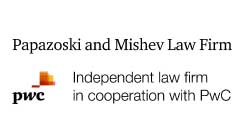Tuca Zbarcea & Asociatii Partner Gabriela Anton, Gecic Law Counsel Miodrag Jevtic, ACI Partners Head of Banking/Finance Marina Zanoga, Avellum Managing Partner Mykola Stetsenko, NazaIi Tax & Legal Partner Nilay Goker Duran, PRK Partners Senior Attorney-at-Law Norbert Hink, and Schoenherr Bulgaria Local Partner Tsvetan Krumov look at how the financial services landscape in the CEE region has been shifting, as local non-banking financial institutions (NBFIs) are gradually gaining ground in an area historically dominated by the banking sector.
In Moldova, “NBFIs are not as common as traditional banking institutions,” ACI Partners Head of Banking and Finance Marina Zanoga begins. “Historically, the banking sector in Moldova has been more dominant and widespread. Banks provide a wide range of financial services, including deposit-taking, lending, and payment services.”
“Czech society has been rather conservative and reticent when it comes to the use of financial products and services,” PRK Partners Senior Attorney-at-Law Norbert Hink continues. “To a certain extent, this attitude may also be a consequence of the historical experience of Czech society where some NBFIs and financial products and instruments were used for fraud and unfair practices.”
However, these days, the financial sector landscape is witnessing some changes. “NBFIs aim to offer simple services to ‘un-bankable’ customers,” Zanoga points out, noting that “while NBFIs may not be as prevalent as traditional banks, their presence and significance have been increasing over time. The growth in recent years shows that NBFIs are seen as an important instrument in the diversification of the financial sector, aiming to provide alternative financing options for small and medium enterprises and stimulate competition in the industry.”
Gaining Market Share
In many CEE markets, NBFIs are, by now, commonplace. For example, they “represent a major player in the Romanian lending markets,” Tuca Zbarcea & Asociatii Partner Gabriela Anton points out. “Overall, Romanian lending-seeking clients are quite familiar with this type of institution, especially for leasing instruments and short-term consumer loans. Currently, there are 177 NBFIs licensed by the National Bank of Romania (NBR) to operate in Romania, so it is a very active segment.” She adds that “last year seems to have been an exceptional year for the NBFIs, as they doubled their year-on-year growth rate.”
And that is increasingly the case in other markets, such as Ukraine and Bulgaria, according to Avellum Managing Partner Mykola Stetsenko and Schoenherr Bulgaria Local Partner Tsvetan Krumov. “We have pension funds, insurance companies, credit unions, payment systems, etc.,” Stetsenko says, adding that “it is definitely very significant and it is growing year by year.” In Bulgaria, according to Krumov, NBFIs are quite common and diverse depending on the type of non-bank financing they provide.
Even in Moldova, where NBFIs are not as common, according to Zanoga, “from 2016 to 2023 there has been an increase of over 350% in total assets of NBFIs,” while “the total number of NBFIs increased from 116 in 2016 to 160 in 2023.” Similarly, in Turkiye, NBFIs “are still in the developmental stages, their participation in the financial system is growing steadily,” NazaIi Tax & Legal Partner Nilay Goker Duran adds. “According to the Association of Financial Institutions consolidated data for NBFIs for 2022, transaction volume TRY 569 billion, total assets TRY 382.7 billion, shareholders’ equity amounted to TRY 55.2 billion, and the number of customers reached 5.8 million.”
However, in Serbia, NBFIs have yet to really gain traction. “In terms of alternatives to banking/finance, NBFIs’ market share is very low as only payment service institutions have a very limited ability to provide credits (only three of them have the license for that),” Gecic Law Counsel Miodrag Jevtic says. “Serbia has no legal framework for microfinancing, making way for pawn shops to provide such financing using the legal gap. The National Bank of Serbia (NBS) opined that pawn shops are not allowed to provide microfinancing in terms of lending, which represents a criminal offense. However, pawn shops are not under the competence of the NBS, they are not regulated, and there are no official records of their market shares and numbers.”
Show Me the (Lent) Money
“Looking into the Romanian non-banking financial sector which includes also investment and pension funds, as well as insurance companies, they became the second largest component of the non-banking financial sector by value of assets (with a share of 23.1% of the non-banking financial sector market in December 2022),” Anton notes.
In terms of volume of loans though, NBFIs still have quite some ground to cover to catch up with their traditional counterparts. “In terms of the volume of loans granted, NBFIs still cover only a small percentage of the market in the Czech Republic,” according to Hink. “Banks provide more than 92% of loans in the Czech market, which leaves NBFIs with less than 8%.” In Bulgaria, Krumov says “the market share of local non-banking financial institutions is small, and they are exclusively active in lower-segment financings.”
However, Hink highlights there is progress: “Since the COVID-19 pandemic, the lending market share for NBFIs has seen a modest increase relative to banks. For example, between 2021 and 2022, the volume of loans provided by NBFIs increased by 7.2% while the volume of loans provided by banks increased by only 5.8% over the same period.”
And niches seem to be developing, with both Krumov and Duran emphasizing a trend among the specific types of NBFIs. Specifically, as Krumov explains, “notably, venture capital financings (for up to EUR 3-5 million) and private equity financing (for up to EUR 10 million) have developed rapidly in recent years mostly due to available EU funds and the European Investment Fund’s activity, providing most of the sources to Bulgarian funds specialized in such financings.”
But traditional banking finance might simply not be the hill to conquer for NBFIs. In Serbia, Jevtic explains that “in terms of other financial services, NBFIs are common. The most frequent ones are currency exchange offices, due to the volume of everyday transactions in EUR and Serbian Dinar, respectively. Other common NBFIs include payment service institutions, insurance companies, financial leasing, factoring companies, and pawn shops.” According to him, “There are over 2,000 exchange offices, 16 financial leasing companies, and 11 payment institutions. Also, there are four management companies managing the assets of seven voluntary pension funds. Finally, there are 22 companies licensed for factoring. Investment funds have also become increasingly popular as means to achieve long-term financial goals.” In Turkiye too, Duran notes that “the factoring sector increased its receivables by 113.8% to TRY 127.2 billion,” and adds that “the sector’s asset size increased by 108.7% to TRY 135.6 billion, with a 110% increase in transaction volume.”
Open Regulators, For Now
While customary national bank supervision seems to be the norm, the regulatory environment with regard to NBFIs seems fairly liberal across CEE. “As mentioned, Serbia remains passive in allowing NBFIs to provide financing in a banking fashion,” Jevtic notes. “However, Serbia very much encourages financial services which are common for NBFIs.” He further adds that tokenization and digitalization of financing will be likely a subject of future regulatory discussion.
Stetsenko notes that “Ukraine is fairly liberal in this respect, but all non-banking financial institutions are subject to prudential supervision by the National Bank of Ukraine, including sources of funds and shareholding structure.”
For Hink, the cautious approach to consider is that of the market rather than the regulator: “Generally speaking, there is a rather more cautious approach towards NBFIs and their services and products in the Czech Republic when they represent an alternative (substitute) to banking services. It usually takes longer for Czech society to gain confidence in a new NBFI and to start using its services to a greater extent.” That said, according to him, “the level of legal regulation of NBFIs in the Czech Republic is basically the same as in other EU countries as the financial market is subject to significant unification and harmonization within EU law. It should be added that in cases where European legislation is implemented into Czech law, it is not uncommon for the Czech legislator to adopt legislation that is stricter in some aspects than the implemented legislation requires.”
Anton and Krumov also highlight relatively smooth registration requirements in Romania and Bulgaria respectively. “In our experience, the legal procedure for the incorporation and authorization of an NBFI with the NBR is generally smooth, as the Romanian regulator has shown a fairly open approach towards such applications,” Anton says. Still, she notes, “the regulator has used the capital requirements applicable to the NBFIs as a tool to deter the practice of excessive interest rates practiced to short-term consumer loans granted by certain institutions. From this perspective, there is a clear orientation of the national supervision authority to increase the capital and prudential requirements applied to the institutions registered with the Special Registry, in a manner similar to the credit institutions.” Additionally, Anton says that “as of January 1, 2023, NBFIs are required to apply the International Financial Reporting Standards as the basis of accounting and for the preparation of individual annual financial statements and for prudential supervision purposes.”
“Regarding non-banking classic lending (where the lending sources have not been raised publicly), as well as leasing, factoring, and trade finance only registration with the Bulgarian National Bank is needed where the procedure is quite straightforward,” Krumov emphasizes. “Venture capital and private equity finance are not regulated activities per se in Bulgaria. Theoretically, licensing under the EU alternative investment funds directive may be applicable but the relevant thresholds for managed assets in private equity/venture capital funds, triggering such licensing are very high for the Bulgarian market.”
But the smooth waters might soon be behind NBFIs with many predicting a more conservative approach in terms of the regulator landscape. Zanoga, for example, draws attention to the changing nature of Moldova’s NBFIs regulation: “We believe that the market will become more and more conservative. It is dictated by several factors. Firstly, the banking crisis showed the need for conservative payouts. Moldovan legislators enacted important legislative changes aiming to fight the over-indebtedness of micro borrowers, a common concern in recent years. Strict rules on responsible lending applicable both to NBFIs and banks have been enacted in 2022.” Secondly, she says, “Starting on July 1, 2023, the supervision of NBFIs is passed to the National Bank of Moldova (NBM) which will exercise the supervision of banking and non-banking financial institutions. The announced priority of the NBM is to ensure sound corporate governance of NBFIs and strengthen the internal control functions in each entity, to obtain better public accountability from them.”
Similarly, Hink adds: “With regard to the regulation of NBFIs in the Czech Republic, I expect the level of regulation to increase in line with the trend in recent years and to extend to areas that have not been regulated at all or minimally.” And Ukraine too can expect a tightening of oversight with Stetsenko noting that “several years ago supervision of non-banking financial institutions was transferred from the old regulator to the National Bank of Ukraine. The latter is more rigorous in its oversight function and I would expect it to monitor market participants even closer in the future.”
Looking Ahead: What’s to Come
Overall, sentiments about the future of NBFIs seem to be positive. “Due to its regional location and fintech operations, Turkiye has the potential, and, therefore, is open to becoming an important center for the collection and channeling of regional financial resources for the Middle East, Central Asia, North Africa, and Eastern Europe,” Duran says, adding that “the banking and non-bank financial industry in Turkiye still has significant room for expansion. The finance and banking sector must continue to draw in foreign permanent capital and this capital investment and employment for Turkiye to reach the 2023 targets.” Echoing Duran, Stetsenko says that “without a doubt, the role and share of non-banking financial institutions will only grow in Ukraine.” Additionally, Krumov says that “as the expected EU funds allocated for venture capital/private equity financing under the ongoing post-COVID-19 recovery plan for Bulgaria are significant, such financings may well double in volume in the next five years.”
For others, while acknowledging there is potential, there are questions left, the answers to which will very much impact the outlook of NBFIs: “As for Serbia, this will mostly depend on two factors – the financial stability of the market and the demand for retail and corporate financing,” Jevtic says. “If there is a positive trend in both factors, it is likely that there will be more openness in the future. We expect future incentives regarding the tokenization of lending, to be led by NBFIs.”
“I do not expect the general sentiment and attitude of Czech society towards NBFIs and their products and services to change significantly in the next five years,” Hink notes. “I expect that a rather conservative and cautious approach and greater trust in banks and their services will continue to prevail in the Czech Republic. At the same time, however, it can be expected that some types of NBFIs and their products (which are currently perceived as riskier in the Czech Republic, e.g., crowdfunding), may gain more trust in society and be used to a much greater extent than is currently the case within next five years as a result of their longer successful presence on the market.”
This article was originally published in Issue 10.7 of the CEE Legal Matters Magazine. If you would like to receive a hard copy of the magazine, you can subscribe here.





















